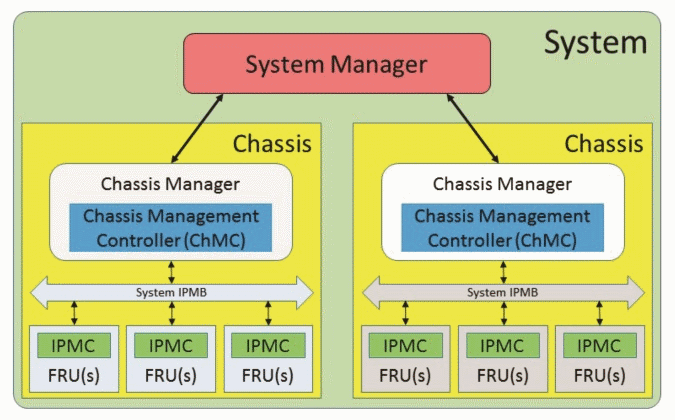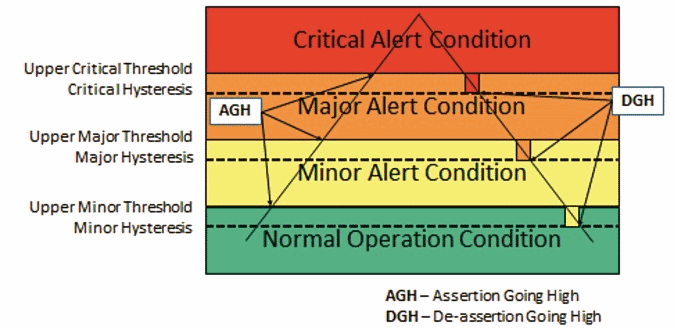By GERALD HOVDESTAD
Director COTS Engineering,
Behlman Electronics
www.behlman.com
Smart electronics systems now have more computing power, a lighter weight, and are smaller than ever before, and that trend is likely to accelerate. As a result, ever-smarter power supplies are required to complement these systems. The days are gone when system designers could wait until it was determined what components were needed to accomplish a performance goal before considering the system power requirements. In the past, attempts were often made to squeeze a power supply into whatever corner of the system remained vacant. Accommodating that supply with its requirements for cooling was usually an afterthought. Performance monitoring and power supply optimization were rarely considered. Simple fault monitoring was sometimes possible, but detailed analysis was beyond the scope of most system designs.
Today, system specifications are being written with an emphasis on intelligent platform management and intelligent system management, as described in the recent ANSI-approved VITA 46.11. This specification makes a strong case for carefully monitoring and controlling all aspects of the system to significantly improve system performance and to drastically reduce downtime and maintenance costs. An intelligent VPX power supply is a vital part of this effort in order to provide reliable, flexible, and very intelligent power for today’s — and tomorrow’s — new VPX systems.
VPX power supplies have been used in many systems for several years. Some of these systems require thousands of watts of power. The systems are continuing to perform reliably; however, they provide only basic fault and temperature monitoring. The latest VPX power supplies take the concept of system intelligence to a new level. System managers can now monitor input voltage and current, as well as output voltage and current.
In addition, detailed temperature measurements are usually available at multiple locations throughout the power supply. While this information is very useful in determining if there is a power supply problem, it is also invaluable to the system manager for monitoring total system performance. A great deal of system information can be derived through judicious interpretation of the data available from the power supply.
For example, an increase in input power could mean many things, ranging from a normal response to increased workload, changes in local or ambient temperature, power supply problems, or other system anomalies. Input power changes without output changes might indicate a problem with the power supply itself, providing other monitored parameters, such as temperature and efficiency, remain unchanged. An Intelligent System Manager can receive all the information available, make well-informed decisions about system performance, and alter system operations as necessary. If overheating is detected anywhere in the system, corrective action can be immediately taken. For example, airflow might be increased, or processing workloads modified, depending on the interpretation of monitored parameters. The ability to rapidly communicate with all the system components, power supplies, chassis, FRUs, etc., as described in VITA 46.11 (see Fig. 1 ), yields a very robust, flexible system.

Fig. 1: Co-resident system manager with dual redundant VITA 46.11 chassis managers (Reprinted with permission from VITA, 2015).
Besides providing detailed power supply and system performance information, intelligent VPX power supplies give the people managing the system great flexibility in the adjustment of internal power supply limits and warnings. These parameters are normally fixed in older “dumb” power supplies. However, in the spirit of VITA 46.11 flexibility, a smart VPX power supply interface allows the user to adjust warning and limit thresholds for many functions, such as over- and under-voltage, over-current, and over-temperature.
Applications for intelligent VPX power supplies in military and aerospace electronics are increasing, as design engineers discover that they can now dynamically adjust system parameters. This feature can significantly affect overall performance. The ability to adjust parameters and thresholds during the course of a mission adds very useful flexibility. For example, in the past, many systems had a battle short feature, which allows an operator to temporarily bypass certain safety features in a system to ensure completion of the mission without interruption due to those safety features. This sometimes allowed a system to continue operating until it failed, burned up or exploded, which might have catastrophic results if it occurred before the mission was completed. With today’s intelligent VPX systems (see Fig. 2 ), dynamic adjustments can be made to keep the system operating at levels well beyond basic system limits, without risking catastrophic failure and shutdown. There are so many different scenarios that can be considered; the limits are only in the imagination of the system designer. Extended system flying time, sporadic increases in processing power, dynamic redundancy, and many other features are now possible.

Fig. 2: IPMI event thresholds with hysteresis (Reprinted with permission from VITA, 2015).
One point to note in existing VPX specifications is the absence of a clear definition of programmable power supply functions. As discussed in system management specification VITA 46.11, some VPX power supplies (see Fig. 3 ) incorporate the well-defined functions in the PMbus specifications as a starting point for power supply management. It has been suggested that a new specification dedicated to power supply management be written, possibly as a subset of VITA 46.11 or VITA 62. The PMbus commands could be used, and then modified or expanded, as new system configurations evolve. As of this writing, more than 60 Command Codes are available in some smart VPX power supplies. They include all of the inventory information discussed in VITA 46.11, as well as significant amounts of performance data and adjustable thresholds, as discussed above.
As the need increases for smart systems with more computing power that are also lighter and smaller, new VITA VPX parameters will have to be agreed upon, and provided by manufacturers, to meet today’s requirements for greater system intelligence, and provide a robust pathway toward smarter power for the future.

Fig. 3: Two examples of today’s intelligent VPX power supplies are those manufactured by Behlman Electronics. The 6U Behlman VPXtra 1000CD-IQ power supply provides 1,000 W (12 Vdc and 3.3 Vdc auxiliary 3.3 Vdc). The 6U VPXtra 1000CM-IQ power supply provides 700 W (12 Vdc, 5 Vdc, and auxiliary 3.3 Vdc, -12 Vdc, and +12 Vdc).
Advertisement
Learn more about Behlman Electronics





